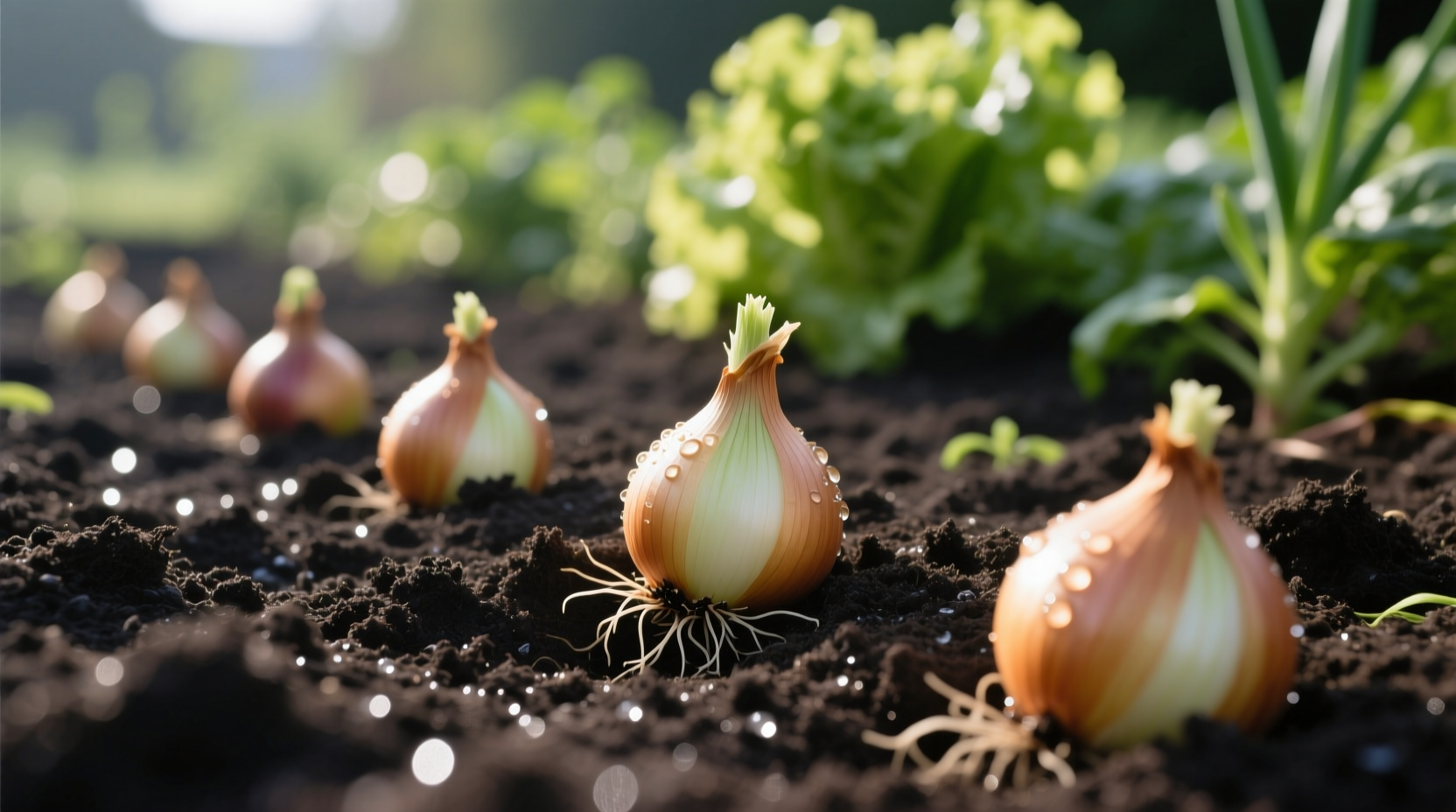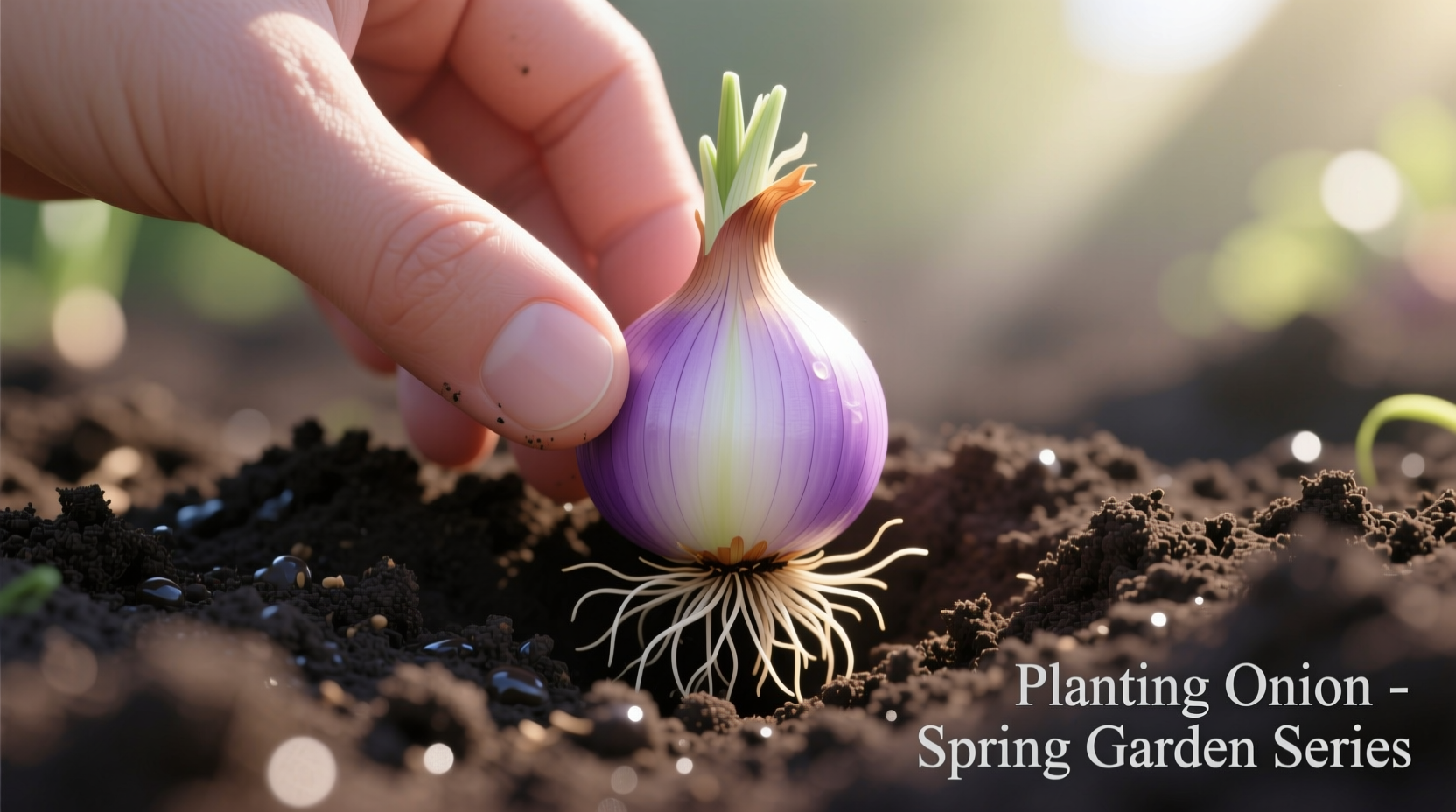Discover exactly how to grow onions successfully with this comprehensive guide. Whether you're a first-time gardener or looking to improve your harvest, you'll learn proven techniques for soil preparation, planting timing, and care that result in larger, sweeter onions with better storage potential. We've distilled decades of horticultural research into actionable steps anyone can follow.
Understanding Onion Types and When to Plant
Choosing the right onion variety for your climate is the foundation of a successful harvest. Onions are categorized by their day-length requirements, which determine when they form bulbs:
| Onion Type | Day Length Trigger | Best Regions | Planting Time |
|---|---|---|---|
| Short-Day Onions | 10-12 hours of daylight | Southern states (USDA zones 7-10) | October-November |
| Intermediate-Day Onions | 12-14 hours of daylight | Mid-latitude regions (USDA zones 5-7) | February-March |
| Long-Day Onions | 14+ hours of daylight | Northern states (USDA zones 2-5) | March-April |
This classification system, documented by the USDA Agricultural Research Service, explains why certain varieties thrive in specific regions. Planting the wrong type for your latitude results in small bulbs or premature bolting. For precise timing in your area, consult your local Cooperative Extension Service planting calendar.
Soil Preparation Essentials
Onions demand well-prepared soil for optimal growth. Unlike many vegetables, they have shallow root systems that require loose, well-drained conditions to develop properly.
Begin soil preparation 3-4 weeks before planting with this timeline:
- Test soil pH (ideal range: 6.0-6.8) using a home kit or through your extension service
- Clear area of weeds and debris
- Add 2-3 inches of compost or well-rotted manure
- Mix in 1-2 pounds of 10-10-10 fertilizer per 100 square feet
- Create raised beds 4-6 inches high for better drainage
According to research from University of Minnesota Extension, onions grown in properly amended soil show 30-40% larger bulb development compared to unamended plots. The shallow root system makes onions particularly sensitive to soil compaction, so avoid walking on planting areas.
Planting Techniques That Work

Onions can be grown from seeds, sets (small bulbs), or transplants. Each method has advantages depending on your experience level and climate:
- Seeds: Most economical but require 12-16 weeks start time; best for long-season areas
- Sets: Easiest method; plant 1-2 inches deep, pointed end up, 4-6 inches apart
- Transplants: Balance of ease and control; space 4-5 inches apart in rows 12-18 inches wide
When planting sets, push them into soil so the tips are just visible at the surface. Deeper planting produces smaller bulbs, while shallow planting leads to loose sets that wash away. For optimal spacing, follow the "two-finger rule" - place sets far enough apart that you can comfortably fit two fingers between them.
Care and Maintenance Through the Growing Season
Consistent care determines whether you'll harvest scallions or full-sized bulbs. Onions have specific needs that differ from other garden vegetables:
Watering Requirements
Onions need about 1 inch of water weekly, but consistency matters more than quantity. Irregular watering causes splitting and disease susceptibility. During bulb formation (late spring to early summer), maintain even moisture. Reduce watering 2-3 weeks before harvest when tops begin falling over.
Fertilizing Schedule
Apply nitrogen fertilizer when plants are 6 inches tall, then every 2-3 weeks until bulbs begin forming. Stop fertilizing when bulbs swell to prevent excessive top growth at the expense of bulb development. Excessive nitrogen late in the season produces thick necks that don't cure properly.
Weed Control
Onions compete poorly with weeds due to their shallow roots. Hand-pull weeds carefully or use mulch (straw or shredded leaves) to suppress weeds without disturbing roots. Avoid deep cultivation near plants.
Harvesting and Storage Tips
Knowing when and how to harvest determines your onions' storage life. Most gardeners harvest too early, sacrificing potential size and storage quality.
Harvest when:
- At least 50% of tops have fallen over naturally
- Bulb necks become soft and tops yellow
- Outer skins turn papery and dry
Follow these steps for proper harvesting:
- Cease watering when tops begin falling
- Lift bulbs carefully with a garden fork
- Cure in a warm, dry, well-ventilated area for 2-3 weeks
- Trim tops to 1 inch and roots to 1/4 inch after curing
- Store in mesh bags in a cool, dry place (32-40°F, 65-70% humidity)
Properly cured onions can store 4-6 months. Sweet varieties (like Vidalia) have higher water content and store for only 1-2 months, while pungent storage onions (like Yellow Sweet Spanish) keep longest. According to Penn State Extension, improper curing accounts for 70% of storage losses in home gardens.
Troubleshooting Common Onion Problems
Even with proper planting, gardeners encounter challenges. Understanding these context boundaries helps address issues specific to your growing conditions:
- Bolting (flowering): Caused by temperature fluctuations; use appropriate varieties for your zone
- Small bulbs: Overcrowding, poor soil, or wrong day-length variety
- Rotting bulbs: Excessive moisture or poor drainage
- Purple leaves: Phosphorus deficiency; add bone meal or rock phosphate
Remember that onion problems often reflect broader garden conditions. For example, thrips damage appears as silvery streaks on leaves and is worse in dry conditions. The Oregon State University Extension recommends regular monitoring and using reflective mulches to deter these pests.











 浙公网安备
33010002000092号
浙公网安备
33010002000092号 浙B2-20120091-4
浙B2-20120091-4